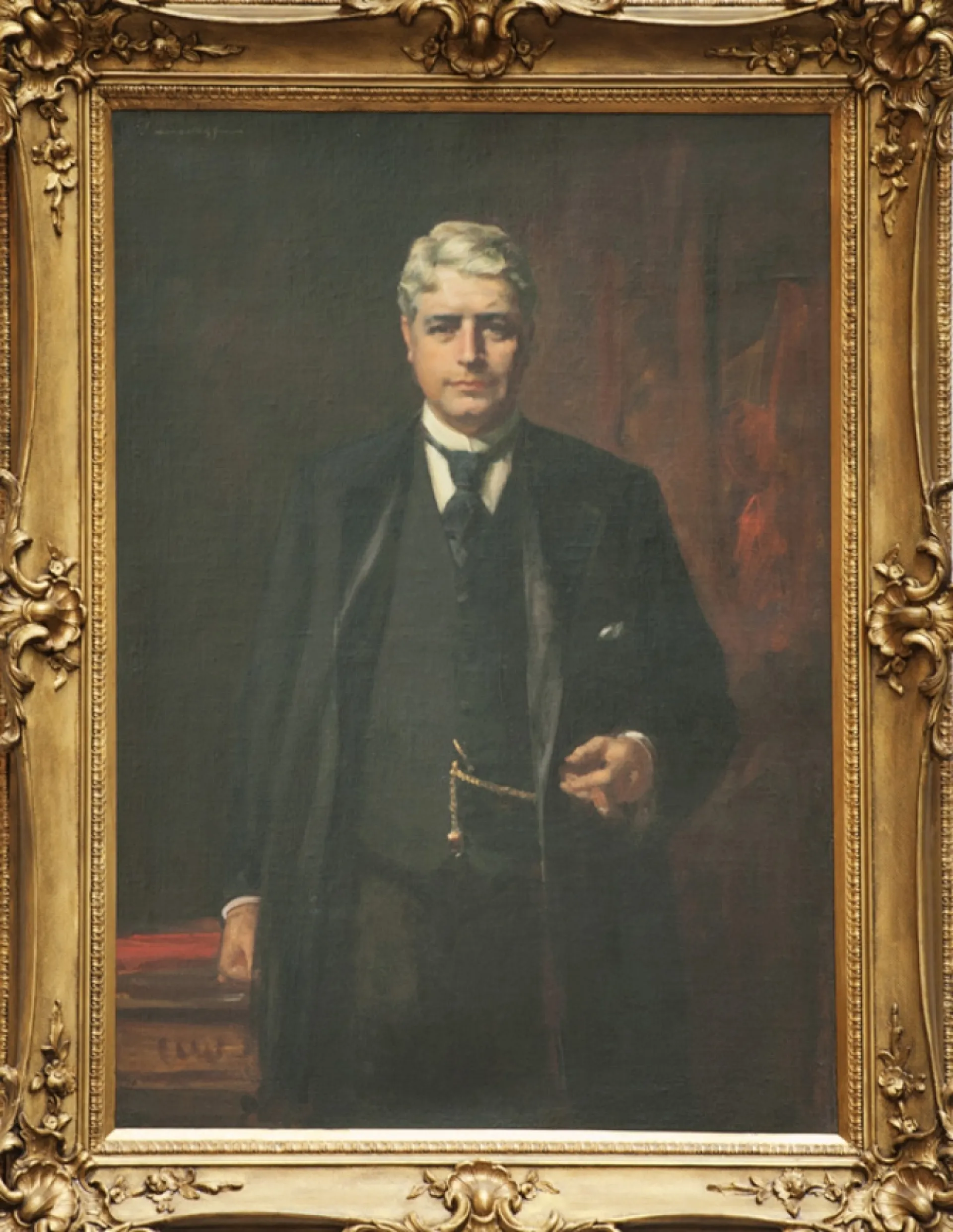High Court of Australia Historic Memorials Collection

The Rt Hon Sir Edmund Barton (1849–1920) was a key player in the federation movement and a leader of the Constitutional Conventions. In September 1903 he resigned as the first Prime Minister of the Australian federation that he had helped to form, to accept a commission as a Justice of the High Court. The Governor-General, Lord Tennyson, signed the commissions appointing Sir Samuel Griffith, Sir Edmund Barton and Richard O’Connor as the first Justices of the Court on 5 October 1903. Bea Maddock's mural outside Court 1 represents the appointments and inauguration ceremony, and Marcus Beilby’s painting on Level 3 depicts the swearing in of Justice Richard O’Connor. Justice Barton sat on the High Court from 5 October 1903 to 7 January 1920.
Edmund Barton graduated with a Bachelor and Masters of Arts degree from the University of Sydney, and studied law in the solicitor’s office of Burton Bradley and G.C. Davis’ chambers. He was admitted to the NSW Bar in 1871. He was appointed a Queen's Counsel (QC) in 1889. He held various parliamentary and executive government appointments during his time as a Member of the NSW Parliament (1879–94, 1897–99), including those of Speaker (1883–87), Attorney-General (1889, 1891–93), Leader of the Opposition (1898–99). In the new Federal Parliament he served as Prime Minister (Protectionist Party) and Minister for External Affairs (1901–03). He was appointed to the Privy Council in 1901 and accepted a knighthood in the Grand Cross of St Michael and St George (GCMG) in 1902, after refusing knighthoods in 1887, 1891 and 1899.
John Campbell Longstaff was born on 10 March 1861 at Clunes, Victoria, and he grew up in Victoria. His father had intended another career for his son, but John was finally allowed to attend the art school of the National Gallery of Victoria. In 1887 he was the first recipient of the school’s travelling art scholarship with his painting Breaking the News, which poignantly depicted the aftermath of a mining accident. In the ensuing years Longstaff spent time in Europe and Australia developing his career mainly as a portraitist although he also painted in other genres. Artists who influenced his style included the Australian impressionist John Peter Russell, the French historical artist Fernand Cormon and the seventeenth century Spanish portraitist Diego Velázquez. He enjoyed much success, being invited to paint many royal subjects and other dignitaries. His works were exhibited at the Royal Academy of Arts regularly during the period 1902–20, and at the Paris Salon. In 1918–19 he served as an official war artist with the Australian Imperial Force. From August 1920 Longstaff lived permanently in Melbourne, though he worked in other cities on a regular basis and held many positions in Australian art societies and organisations. He was a trustee at the National Gallery of Victoria. Some of his well known portraits are of King Edward VII, Queen Alexandria, Sir John Monash, Dame Nellie Melba and Henry Lawson. He won the Archibald prize for portraiture five times between 1925 and 1935. In 1928 he was knighted.